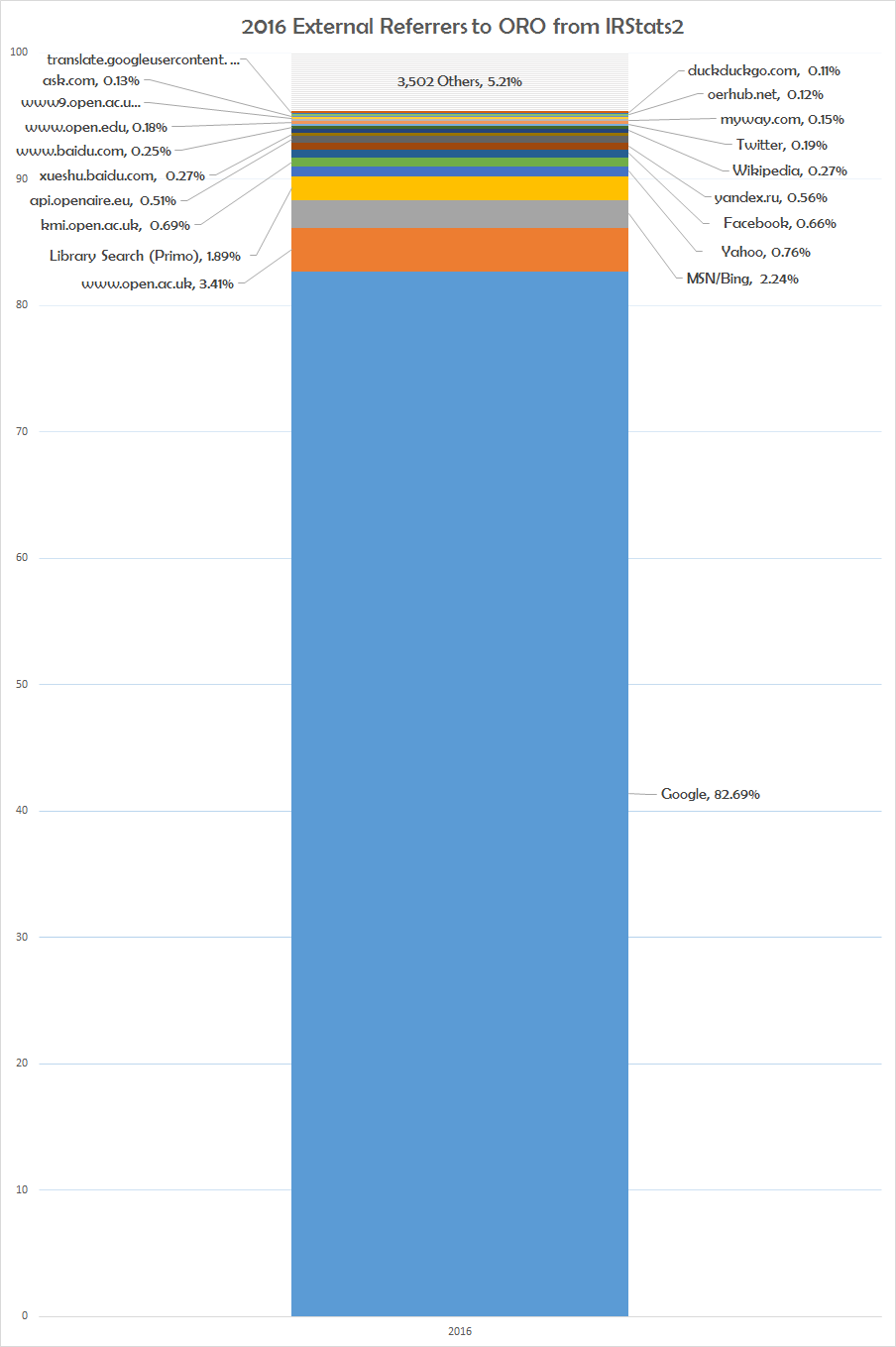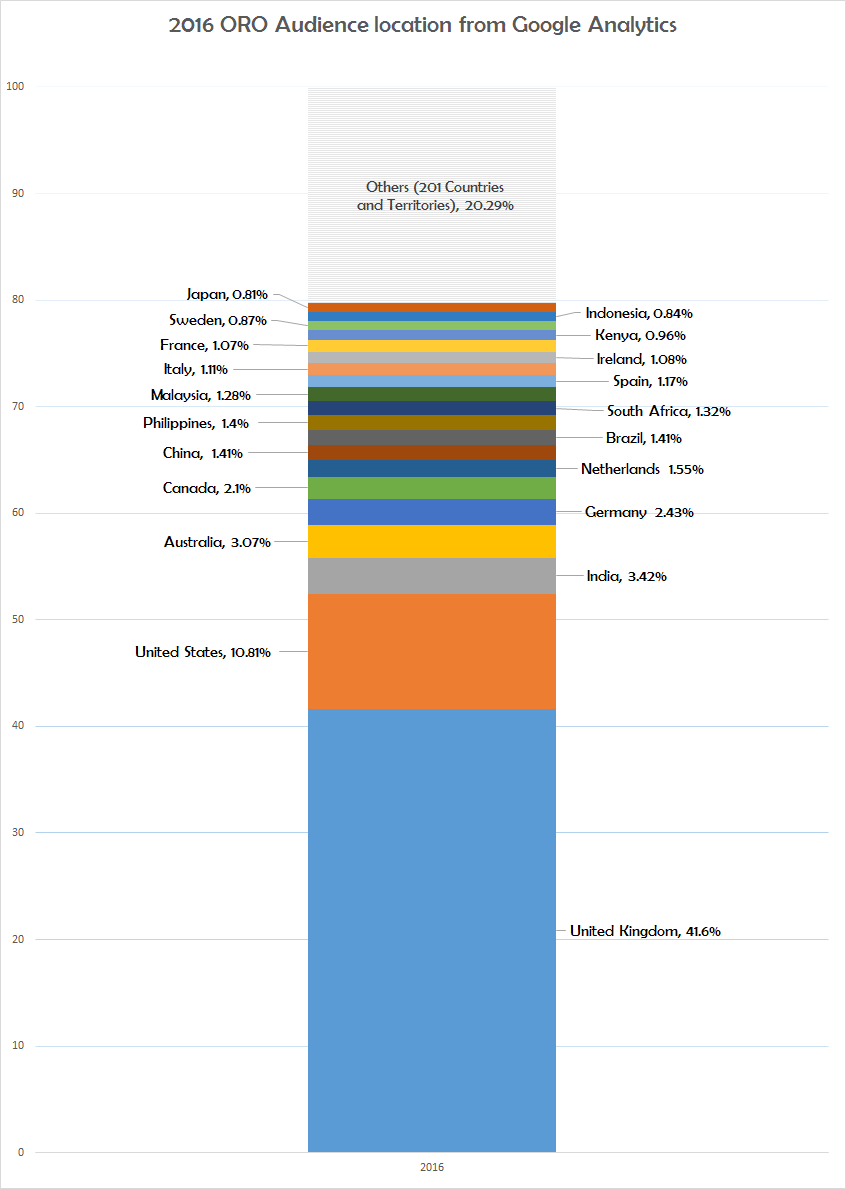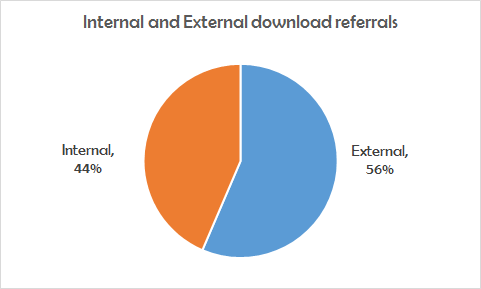Checking monthly download statistics gives a great insight into individual cases of how events in social media can impact the dissemination of Open Access research outputs. In October the article An investigation into written comments on assignments: do students find them usable? by Mirabelle Walker in Assessment & Evaluation in Higher Education, 34(1) received an exceptional 531 downloads. But unfortunately I couldn’t track down the event(s) that caused this spike. All I could see was a large set of referrals from a Facebook post (which I couldn’t get any more specific about…. gggrrrr!!!) and also a large set of referrals from Greece!
Top downloads for both September and October are below.
So I stepped back and decided to think about the bigger picture – how do items get downloaded from ORO i.e. what platforms are being used to download items from ORO and exactly where in the world do they come from.
Firstly, I compared the number of external referrals to referrals from ORO itself (e.g. someone clicking the download file from an external website rather than downloading an item from within ORO itself).
Internal referrals equalled 604,344 (44%), whereas external referrals equalled 783,232 (56%)… most users of ORO never actually visit the site!
So from here I looked at the most popular external referrers (no prizes are on offer…)
 Yes, ORO loves Google (82.69%, 642,185 downloads). Unpicking it a bit I was surprised how little traffic gets referred from Twitter (0.19%, 1,438 downloads) and that more referrals actually come from Facebook (0.66%, 5,126). I was also pleasantly surprised to see a significant minority of traffic coming from Library Search (1.89%, 14,671). But, really, ORO loves Google.
Yes, ORO loves Google (82.69%, 642,185 downloads). Unpicking it a bit I was surprised how little traffic gets referred from Twitter (0.19%, 1,438 downloads) and that more referrals actually come from Facebook (0.66%, 5,126). I was also pleasantly surprised to see a significant minority of traffic coming from Library Search (1.89%, 14,671). But, really, ORO loves Google.
So where in the world do these external downloads come from…  Again, no surprises, the UK the biggest country of referrals (41.6%, 185,834), followed by the US (10.81%, 48,282) and India in third (3.42%, 15,278).
Again, no surprises, the UK the biggest country of referrals (41.6%, 185,834), followed by the US (10.81%, 48,282) and India in third (3.42%, 15,278).
So, whilst the individual stories can be fascinating, the overall picture is that downloads come direct from Google and are most likely to originate from the UK. The take away is we need to ensure ORO remains visible to search engines, it doesn’t actually matter whether people “use” the website, as long as they can access the content.

